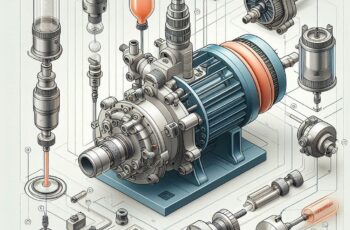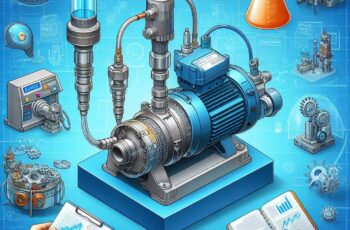What Are Peristaltic Pumps and Their Applications?
Introduction to Peristaltic Pumps
Definition and Working Principle
Peristaltic pumps are positive displacement pumps that use a flexible tube and a set of rotating rollers to move fluids. As the rollers compress and release the tubing, they create a peristaltic motion, mimicking how our digestive tract pushes food through. This design ensures precise fluid transfer without contamination.
Key Features of Peristaltic Pumps
These pumps are known for their simplicity, gentle fluid handling, and ability to work with a wide range of liquids, from sensitive pharmaceuticals to abrasive slurries.
How Do Peristaltic Pumps Work?
Role of Tubing and Rollers
The tubing in peristaltic pumps serves as the fluid pathway. Rollers or shoes compress the tubing in sequence, creating a vacuum that draws fluid into the system.
Mechanism of Fluid Transfer
The continuous compression and release generate a smooth flow, ensuring precise and pulsation-free fluid movement.
Industrial Applications of Peristaltic Pumps
Medical and Pharmaceutical Uses
Drug Delivery Systems
Peristaltic pumps are integral to drug delivery, ensuring precise dosing without compromising the sterility of medications.
Blood Analysis and Dialysis
In medical diagnostics, these pumps provide accurate fluid handling, crucial for processes like blood analysis and dialysis.
Food and Beverage Industry
Handling Viscous Fluids
From syrups to sauces, peristaltic pumps excel in transferring thick and viscous liquids.
Benefits in Hygiene and Maintenance
Their design minimises contamination risks, making them ideal for handling consumables. Additionally, their easy-to-clean nature simplifies maintenance in food production lines.
Water and Wastewater Treatment
Chemical Dosing in Treatment Plants
Peristaltic pumps accurately dose chemicals like chlorine or pH adjusters, essential for effective water treatment.
Sludge and Slurry Handling
Their ability to handle abrasive and thick fluids makes them ideal for transferring sludge in wastewater facilities.
Chemical Industry Applications
Safe Handling of Corrosive Substances
These pumps can safely manage aggressive chemicals without risk to equipment or operators.
Precision in Dispensing Solutions
The high accuracy of peristaltic pumps makes them suitable for precise chemical blending and dispensing tasks.
Advantages of Using Peristaltic Pumps
Non-Contaminating Fluid Handling
Since fluids only come into contact with the tubing, contamination risks are virtually eliminated.
Low Maintenance Requirements
Their straightforward design ensures minimal wear and tear, reducing maintenance costs and downtime.
Adaptability to Various Fluids
From highly viscous liquids to delicate solutions, peristaltic pumps handle a broad spectrum of fluids efficiently.
Conclusion
Peristaltic pumps are versatile, reliable, and essential across industries requiring precision and cleanliness. Their unique design and adaptability make them a popular choice for applications ranging from medical devices to wastewater treatment.

